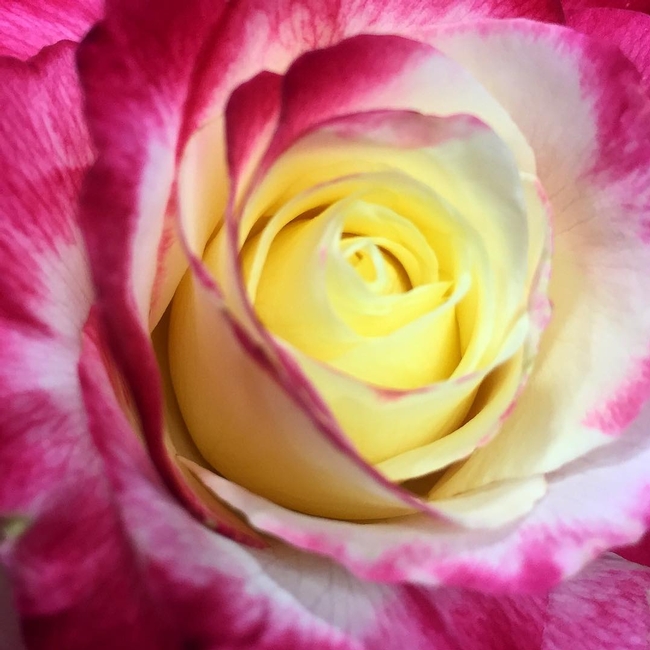Everything's coming up Roses!
By Jackie Woods UCCE Master Gardener
I love roses and would like to plant a few in my landscape. What basic information should I know before I begin this journey? Cynthia M., Paso Robles.
Roses… a timeless symbol of love, sympathy or gratitude; an esthetically pleasing-to-the-eye flower that oftentimes produce intoxicating fragrances loved by many. There are over a hundred species of roses and thousands of different cultivars or varieties. Roses are easy to grow and, with a basic understanding of that they require, any garden enthusiast can be successful with growing them in their gardens.
There are many different varieties of roses. Hybrid tea roses are a large bloom on a long stem. (Double Delight, Mister Lincoln.) Grandiflora are a combination of Hybrid tea and floribunda and can have one bloom per stem or cluster of blooms on a stem. (Gold Medal, Queen Elizabeth) Floribundas are shorter bushes with shorter cluster blooms but will sometimes bloom singularly. (Iceberg, Betty Boop.) Polyanthas are small bushes with clusters that are approximately one inch in diameter. (China Doll, The Gift.) Other varieties include miniature, miniflora, tree, shrub and climbing roses.
Roses can be purchased in bare root or plant form. Bare root roses are dormant, soil-less, leafless plants that are usually packed in moist sawdust for ease of storage and shipment. With our mild Central Coast climate, the best time to plant roses is in early spring. Pruning of existing rose plants should be done at the end of winter or in January- February with clean, sharp pruners. Cuts should be made ¼ inch above the bud eyes. Throughout their growing months, prune off dead leaves, spent rose heads and sucker shoots as needed. Feed roses in early spring and again in early summer.
If you want to know more about growing roses, please join us at the UCCE Master Gardener's Advice to Grow By workshop on Saturday, October 21, 2017 in our demonstration garden at 2156 Sierra Way, San Luis Obispo, 10:00 am to noon. Please visit our website to register at http://ucanr.edu/sites/mgslo/. If inclement weather, please meet in the auditorium. If you would like to walk through our demonstration garden, docents will be available after the workshop until 1:00 p.m.
